#Natural Pest Control Products
Text
Orange Guard Inc.Keeping Your Home Safe and Pest-Free
Orange Guard offers a revolutionary insecticide crafted solely from edible plant extracts and water, ensuring effectiveness while remaining environmentally friendly. EPA registered and FDA GRAS listed, our product is safe for use around food, humans, and pets. We aim to deliver superior pest control solutions, proudly made in the USA.
0 notes
Text
The Future of Sustainable Agriculture: Innovations and Best Practices
Agriculture is one of the largest industries in the world, providing food for billions of people. However, the current state of agriculture has a significant impact on the environment, from soil degradation to water pollution and loss of biodiversity. It is crucial for the future of our planet that we transition towards sustainable agriculture practices.
we will explore the latest innovations…
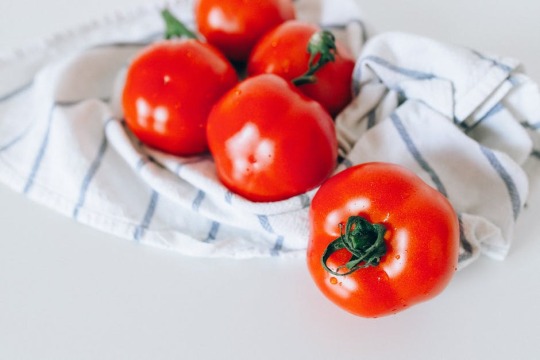
View On WordPress
#agroecology#agroforestry#best practices#biodiversity#biological control#climate change#conservation agriculture#crop rotation#ecosystem services#food production#government policies#habitat manipulation#individual action#integrated pest management#intercropping#land use#natural methods#organic agriculture#precision agriculture#regenerative agriculture#resistant crops#soil health#sustainable agriculture#sustainable future.#technology#vertical farming
1 note
·
View note
Text
spotted lanternflies, Lycorma delicatula. an infamous invasive in my area, but I’ve come to enjoy these clumsy little freaks more than I ever thought I would.

people are oddly obsessed with destroying them still, although the effect of killing them by hand or even with pesticides is negligible on the now-well-established populations. this is more of a “stop the spread” problem than it is “get rid of established populations,” and it’s people who don’t usually see these who should be on the highest alert for them. still, it’s interesting how their conspicuity, diurnality, and generally slow speed has made them the perfect thing for humans to kill thoughtlessly while other pests stay hidden, like emerald ash borers, or are undeservedly beloved, like honeybees, most of the eastern mantises, and feral cats.
the kill-on-sight campaigns area little depressing to me, especially when directed towards children —sure, they teach invasive species awareness, but really it’s just feeding an ugly desire to kill little animals. not going to ask you to not control them if they’re causing damage to your plants, but the weird bloodthirsty attitude towards Lycorma and declarations of their “evil” nature don’t seem terribly productive. they are as blameless as any invasive species. even when invasives must be killed by the individual (works for some species, not all!), there is still room to act thoughtfully and not demonize an animal for being an animal.
so personally, I let the lanternflies chill—for the most part, they feed on invasive weeds and nonnative ornamental plants, so they’re not much of a concern to me or my garden. whatever proper control methods (parasitoids, pathogens?) get developed probably won’t eliminate all of them, too, so big dumb fulgorids are probably a permanent fixture here. ah, I still feed them to mantises, but the only ones big enough are also invasive…
here’s one all tender and pale after molting. I’d like to find a teneral adult this year, which must be stunning

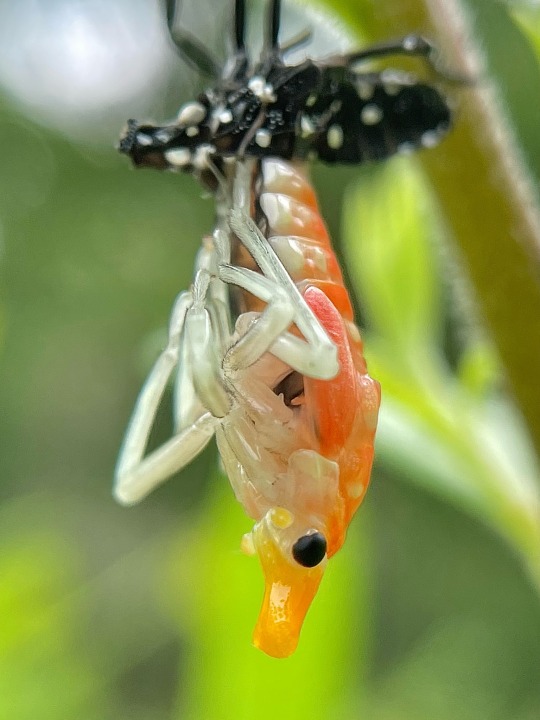
a good post on the topic of killing invasive species by @bowelfly :
795 notes
·
View notes
Text
Introduction To Supporting Sustainable Agriculture For Witches and Pagans
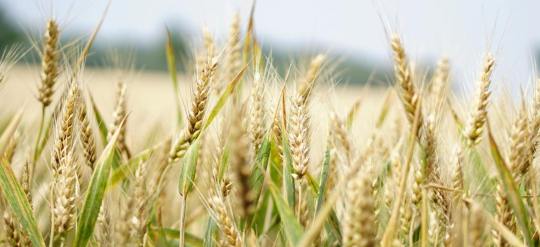
[ID: An image of yellow grain stocks, soon to be harvested. The several stocks reach towards a blurred open sky, focusing the camera on he grains themselves. The leaves of the grains are green and the cereals are exposed].
PAGANISM AND WITCHCRAFT ARE MOVEMENTS WITHIN A SELF-DESTRUCTIVE CAPITALIST SOCIETY. As the world becomes more aware of the importance of sustainability, so does the duty of humanity to uphold the idea of the steward, stemming from various indigenous worldviews, in the modern era. I make this small introduction as a viticulturist working towards organic and environmentally friendly grape production. I also do work on a food farm, as a second job—a regenerative farm, so I suppose that is my qualifications. Sustainable—or rather regenerative agriculture—grows in recognition. And as paganism and witchcraft continue to blossom, learning and supporting sustainability is naturally a path for us to take. I will say that this is influenced by I living in the USA, however, there are thousands of groups across the world for sustainable agriculture, of which tend to be easy to research.
So let us unite in caring for the world together, and here is an introduction to supporting sustainable/regenerative agriculture.
A QUICK BRIEF ON SUSTAINABLE AGRICULTURE
Sustainable agriculture, in truth, is a movement to practise agriculture as it has been done for thousands of years—this time, with more innovation from science and microbiology especially. The legal definition in the USA of sustainable agriculture is:
The term ”sustainable agriculture” (U.S. Code Title 7, Section 3103) means an integrated system of plant and animal production practices having a site-specific application that will over the long-term:
A more common man’s definition would be farming in a way that provides society’s food and textile needs without overuse of natural resources, artificial supplements and pest controls, without compromising the future generation’s needs and ability to produce resources. The agriculture industry has one of the largest and most detrimental impacts on the environment, and sustainable agriculture is the alternative movement to it.
Sustainable agriculture also has the perk of being physically better for you—the nutrient quality of crops in the USA has dropped by 47%, and the majority of our food goes to waste. Imagine if it was composted and reused? Or even better—we buy only what we need. We as pagans and witches can help change this.
BUYING ORGANIC (IT REALLY WORKS)
The first step is buying organic. While cliche, it does work: organic operations have certain rules to abide by, which excludes environmentally dangerous chemicals—many of which, such as DDT, which causes ecological genocide and death to people. Organic operations have to use natural ways of fertilising, such as compost, which to many of us—such as myself—revere the cycle of life, rot, and death. Organic standards do vary depending on the country, but the key idea is farming without artificial fertilisers, using organic seeds, supplementing with animal manure, fertility managed through management practices, etc.
However, organic does have its flaws. Certified organic costs many, of which many small farmers cannot afford. The nutrient quality of organic food, while tending to be better, is still poor compared to regeneratively grown crops. Furthermore, the process to become certified organic is often gruelling—you can practise completely organically, but if you are not certified, it is not organic. Which, while a quality control insurance, is both a bonus and a hurdle.
JOINING A CSA
Moving from organic is joining a CSA (“Community supported agriculture”). The USDA defines far better than I could:
Community Supported Agriculture (CSA), one type of direct marketing, consists of a community of individuals who pledge support to a farm operation so that the farmland becomes, either legally or spiritually, the community’s farm, with the growers and consumers providing mutual support and sharing the risks and benefits of food production.
By purchasing a farm share, you receive food from the farm for the agreed upon production year. I personally enjoy CSAs for the relational aspect—choosing a CSA is about having a relationship, not only with the farmer(s), but also the land you receive food from. I volunteer for my CSA and sometimes I get extra cash from it—partaking in the act of caring for the land. Joining a CSA also means taking your precious capital away from the larger food industry and directly supporting growers—and CSAs typically practise sustainable and/or regenerative agriculture.
CSAs are also found all over the world and many can deliver their products to food deserts and other areas with limited agricultural access. I volunteer from time to time for a food bank that does exactly that with the produce I helped grow on the vegetable farm I work for.
FARM MARKETS AND STALLS
Another way of personally connecting to sustainable agriculture is entering the realm of the farm stall. The farmer’s market is one of my personal favourite experiences—people buzzing about searching for ingredients, smiles as farmers sell crops and products such as honey or baked goods, etc. The personal connection stretches into the earth, and into the past it buries—as I purchase my apples from the stall, I cannot help but see a thousand lives unfold. People have been doing this for thousands of years and here I stand, doing it all over again.
Advertisement
Farmers’ markets are dependent on your local area, yet in most you can still develop personal community connections. Paganism often stresses community as an ideal and a state of life. And witchcraft often stresses a connection to the soil. What better place, then, is purchasing the products from the locals who commune with the land?
VOLUNTEERING
If you are able to, I absolutely recommend volunteering. I have worked with aquaponic systems, food banks, farms, cider-making companies, soil conservation groups, etc. There is so much opportunity—and perhaps employment—in these fields. The knowledge I have gained has been wonderful. As one example, I learned that fertilisers reduce carbon sequestration as plants absorb carbon to help with nutrient intake. If they have all their nutrients ready, they do not need to work to obtain carbon to help absorb it. This does not even get into the symbiotic relationship fungi have with roots, or the world of hyphae. Volunteering provides community and connection. Actions and words change the world, and the world grows ever better with help—including how much or how little you may provide. It also makes a wonderful devotional activity.
RESOURCING FOOD AND COOKING
Buying from farmers is not always easy, however. Produce often has to be processed, requiring labour and work with some crops such as carrots. Other times, it is a hard effort to cook and many of us—such as myself—often have very limited energy. There are solutions to this, thankfully:
Many farmers can and will process foods. Some even do canning, which can be good to stock up on food and lessen the energy inputs.
Value-added products: farms also try to avoid waste, and these products often become dried snacks if fruit, frozen, etc.
Asking farmers if they would be open to accommodating this. Chances are, they would! The farmer I purchase my CSA share from certainly does.
Going to farmers markets instead of buying a CSA, aligning with your energy levels.
And if any of your purchased goods are going unused, you can always freeze them.
DEMETER, CERES, VEIA, ETC: THE FORGOTTEN AGRICULTURE GODS
Agricultural gods are often neglected. Even gods presiding over agriculture often do not have those aspects venerated—Dionysos is a god of viticulture and Apollon a god of cattle. While I myself love Dionysos as a party and wine god, the core of him remains firmly in the vineyards and fields, branching into the expanses of the wild. I find him far more in the curling vines as I prune them than in the simple delights of the wine I ferment. Even more obscure gods, such as Veia, the Etruscan goddess of agriculture, are seldom known.
Persephone receives the worst of this: I enjoy her too as a dread queen, and people do acknowledge her as Kore, but she is far more popular as the queen of the underworld instead of the dear daughter of Demeter. I do understand this, though—I did not feel the might of Demeter and Persephone until I began to move soil with my own hands. A complete difference to the ancient world, where the Eleusinian mysteries appealed to thousands. Times change, and while some things should be left to the past, our link to these gods have been severed. After all, how many of us reading know where our food comes from? I did not until I began to purchase from the land I grew to know personally. The grocery store has become a land of tearing us from the land, instead of the food hub it should be.
Yet, while paganism forgets agriculture gods, they have not forgotten us. The new world of farming is more conductive and welcoming than ever. I find that while older, bigoted people exist, the majority of new farmers tend to be LGBT+. My own boss is trans and aro, and I myself am transgender and gay. The other young farmers I know are some flavour of LGBT+, or mixed/poc. There’s a growing movement for Black farmers, elaborated in a lovely text called We Are Each Other’s Harvest.
Indigenous farming is also growing and I absolutely recommend buying from indigenous farmers. At this point, I consider Demeter to be a patron of LGBT+ people in this regard—she gives an escape to farmers such as myself. Bigotry is far from my mind under her tender care, as divine Helios shines above and Okeanos’ daughters bring fresh water to the crops. Paganism is also more commonly accepted—I find that farmers find out that I am pagan and tell me to do rituals for their crops instead of reacting poorly. Or they’re pagan themselves; a farmer I know turned out to be Wiccan and uses the wheel of the year to keep track of production.
Incorporating these divinities—or concepts surrounding them—into our crafts and altars is the spiritual step towards better agriculture. Holy Demeter continues to guide me, even before I knew it.
WANT CHANGE? DO IT YOURSELF!
If you want change in the world, you have to act. And if you wish for better agriculture, there is always the chance to do it yourself. Sustainable agriculture is often far more accessible than people think: like witchcraft and divination, it is a practice. Homesteading is often appealing to many of us, including myself, and there are plenty of resources to begin. There are even grants to help one improve their home to be more sustainable, i.e. solar panels. Gardening is another, smaller option. Many of us find that plants we grow and nourish are far more potentant in craft, and more receptive to magical workings.
Caring for plants is fundamental to our natures and there are a thousand ways to delve into it. I personally have joined conservation groups, my local soil conservation group, work with the NRCs in the USA, and more. The path to fully reconnecting to nature and agriculture is personal—united in a common cause to fight for this beautiful world. To immerse yourself in sustainable agriculture, I honestly recommend researching and finding your own path. Mine lies in soil and rot, grapevines and fruit trees. Others do vegetables and cereal grains, or perhaps join unions and legislators. Everyone has a share in the beauty of life, our lives stemming from the land’s gentle sprouts.
Questions and or help may be given through my ask box on tumblr—if there is a way I can help, let me know. My knowledge is invaluable I believe, as I continue to learn and grow in the grey-clothed arms of Demeter, Dionysos, and Kore.
FURTHER READING:
Baszile, N. (2021). We are each other’s harvest. HarperCollins.
Hatley, J. (2016). Robin Wall Kimmerer. Braiding Sweetgrass: Indigenous wisdom, scientific knowledge and the teachings of plants. Environmental Philosophy, 13(1), 143–145. https://doi.org/10.5840/envirophil201613137
Regenerative Agriculture 101. (2021, November 29). https://www.nrdc.org/stories/regenerative-agriculture-101#what-is
And in truth, far more than I could count.
References
Community Supported Agriculture | National Agricultural Library. (n.d.). https://www.nal.usda.gov/farms-and-agricultural-production-systems/community-supported-agriculture
Navazio, J. (2012). The Organic seed Grower: A Farmer’s Guide to Vegetable Seed Production. Chelsea Green Publishing.
Plaster, E. (2008). Soil Science and Management. Cengage Learning.
Sheaffer, C. C., & Moncada, K. M. (2012). Introduction to agronomy: food, crops, and environment. Cengage Learning.
Sheldrake, M. (2020). Entangled life: How Fungi Make Our Worlds, Change Our Minds & Shape Our Futures. Random House.
Sustainable Agriculture | National Agricultural Library. (n.d.). https://www.nal.usda.gov/farms-and-agricultural-production-systems/sustainable-agriculture
#dragonis.txt#witchcraft#paganism#hellenic polytheism#witchblr#pagan#helpol#hellenic pagan#hellenic worship#hellenic paganism#hellenic polytheist#demeter deity#demeter worship#persephone deity#kore deity#raspol#etrupol#etruscan polytheist#etruscan polytheism#rasenna polytheism#rasenna polytheist#rasenna paganism
243 notes
·
View notes
Note
What would you consider to be an ethically sourced tail? Where might somebody purchase an ethically sourced tail?
Thank you so much for asking!!! 🐾
Personally I believe It should either: Be sourced as a by-product of the food industry, Transform a waste product to give it value, such as the reclaiming fur from animals culled for environmental management, Minimise waste by re-manufacturing vintage pieces or using surplus manufacturing material, instead of only using new material. There are other options such as taxidermy from ranched animals which were stillborn or died from illness or other natural causes. Byproducts of roadkill, pest management, and wildlife population control which are done in a sustainable manner that keeps the natural population at a healthy and maintainable level. Also if there is no unnecessary pain or cruelty that’s inflicted and killing of said animal involves minimal waste and has a purpose other than simply their fur.
And I know there is the argument that we don’t need to kill animals to make clothing because of course there are other materials to keep us warm, but the best of them (wool, down, leather) also come from animals. Meanwhile, most synthetic fibers (including fake or “faux” fur) are derived from petroleum, a non-renewable resource, the extraction and transformation of which entails serious environmental risks.
In many regions, wildlife populations must be culled annually to maintain healthy and stable populations, to preserve habitat, to protect endangered species (e.g., by culling predators that attack ground-nesting birds or sea turtle eggs), and to safe-guard human health, livestock and property. If furbearer populations must be culled, surely it is more ethical to use these animals than to discard them?
Farmed minks manure, soiled straw bedding and carcasses are composted to produce organic fertilizers, to enrich the soil and produce more food, completing the agricultural nutrient cycle. Biofuels made from mink remains now power buses in Aarhus, Denmark, the world’s largest producer of farmed mink. Similar projects are being tested in North America.
Now after all that here are some options for furs/tails. Though please do your own research into each small business or company you buy from.
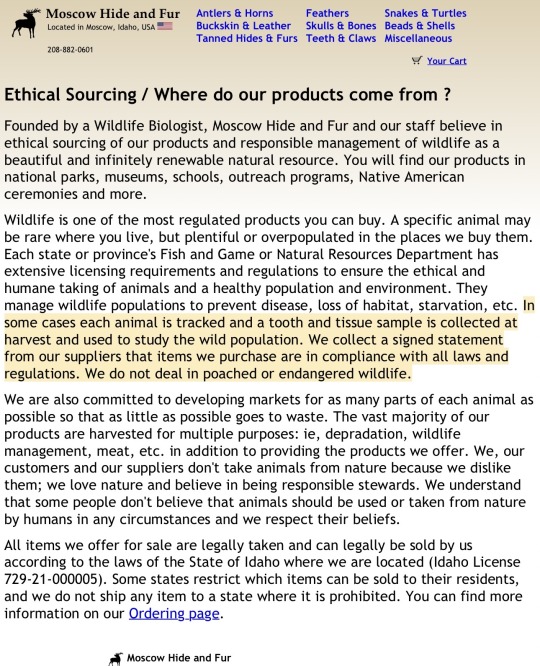
https://www.etsy.com/shop/SterlingFoxTaxidermy
https://www.etsy.com/shop/ChimeraTaxidermyAU
#wolf#therian#wolf therian#wolfkin#wolves#canine therian#therianthropy#canine#theriotype#canis lupus irremotus#belgian malinois therian#belgian malinois#dog therian#dog theriotype#alterhuman#nonhuman#fox therian#coyote therian#bear therian#deer therian#cat therian#mouse therian#bird therian#therian gear#therian tail
24 notes
·
View notes
Photo




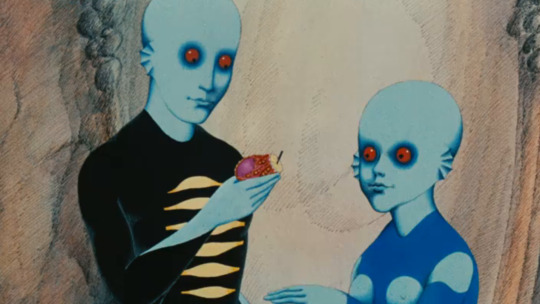


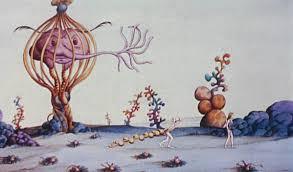


Fantastic Planet (René Laloux, 1973)
Cast (voices): Jennifer Drake, Eric Baugin, Jean Topart, Jean Valmont, Sylvie Lenoir, Michèle Chahan, Yves Barsacq, Hubert de Lapparent, Gérard Hernandez, Claude Joseph, Philippe Ogouz, Jacques Ruisseau. Screenplay: Roland Topor, René Laloux, based on a novel by Stefan Wul. Cinematography: Boris Baromykin, Lubomir Rejthar. Graphic designer: Roland Topor. Film editing: Hélène Arnal, Marta Látalová. Music: Alain Goraguer.
Fantastic Planet" isn't a very satisfactory translation of La Planète Sauvage, the original French title, but the more accurate "Wild Planet" might have led audiences in 1973 to expect a film about a world overrun with motorcycle gangs. Conceived and written by René Laloux and Roland Topor, from a novel by Stefan Wul, designed by Topor and animated by the Jiři Trnka Studio in Prague, Fantastic Planet is a sci-fi fable about the nature of humanity and its place in the universe. The humans in Fantastic Planet are called Oms (from the French hommes), and they are tiny things in a world where the dominant species is the Draags, giant blue humanoid creatures with big red eyes. The Draags consider Oms at best curious little animals and at worst vermin that need periodic efforts at pest control. At the beginning of the film we see a female Om carrying her baby, on the run but being flicked back by a great blue Draag finger each time she thinks she has made it to safety. It turns out that she is being played with by some Draag children, and when the Om mother is accidentally killed, a Draag girl named Tiwa takes the baby as to raise as a pet and calls him Terr. Tiwa outfits Terr with a kind of electronic collar that she can use to pull him back to her if he runs off. As the years pass and Terr grows up, Tiwa tires of her pet and one day he makes his escape and joins up with other Oms, one of whom helps him remove the collar. But Terr has something to share with his rescuers: The Draags receive their education through a headset, and a glitch in Terr's collar has allowed him to listen in on her lessons. Moreover, in his escape, he has stolen Tiwa's headset, and can now share the knowledge possessed by the Draags with his fellow Oms. Eventually, this leads to a revolution in which the Oms are finally able to go to war with the Draags and exploit their vulnerabilities. Much has been made of the fact that the animation was done in Czechoslovakia, beginning in 1967 in the era of the "Prague Spring," and that work on the film was interrupted by the 1968 Soviet invasion. Laloux experienced constant interference from the suspicious authorities, delaying the completion of the film, and the political background adds a piquancy to the finished product. But Fantastic Planet is hardly an allegory of resistance to Soviet repression. It has its roots, as Laloux noted, in the satire of Rabelais, and English speakers will probably find a Swiftian echo in the confrontation of little people and giants. The animation using paper cutouts also recalls Terry Gilliam's work for Monty Python, but the imagination is all Laloux's and Topor's. Alain Goraguer's jazz soundtrack adds immeasurably to the delicate, melancholic tone of Fantastic Planet, giving it a timeless quality where other products of the psychedelic era, like Yellow Submarine (George Dunning, 1968), now seem dated.
74 notes
·
View notes
Text
unpopular opinion, but Zhongli is really a settled down, educated just by the sheer age himbo. like come on, just look at his “ That Which Rises From the Sea” character story. He really personally went door to door to catch the tiny parasite squids
“One such type of creature caused no end of woe for the Geo Archon, long before he took that title along with his place among The Seven.<...>What made them so truly terrible was their small size, which gave them the ability to duck into unimaginably small nooks and crannies.<...>At the behest of the people of Liyue, Morax agreed to wipe these creatures out. But these parasites upon civilization could not be destroyed like enemies on a battlefield, by simply summoning a storm of stone spears that would shatter the earth and churn the soil....<...>So, he went through the town from house to house with prisons of stone, seizing these creatures one by one and locking them away for good...This long campaign of pest extermination taught Morax the true meaning of "a burden lifted."The grueling campaign itself, and the terrible smell of those ocean creatures' secretions, left a lasting impression on the deity. Today, even when he goes out incognito as the mortal man, Zhongli, Morax gives those living, squirming seafood products a wide berth.”
You think if Ningguang had the same problem, she’d go door to door herself to catch little squids one by one?? No, she’s think up twenty more efficient solutions, she’d create a pest control department, hire alchemists to invent a specialized poisons, etc. Zhongli really said “Work harder, not smarter” and now he has seafood allergy.
I call that “geo himbo behavior pattern”, which young Zhongli shares with Itto:
If there’s a problem, throw rocks at it. Wear stupid coat\cloak that leaves your abs uncovered. Collect a found family of lonely losers, most of whom you go out of your way to save. Make sure your red undereye eyeliner is on flick. Be clumsy and good natured enough that the smart, educated lady notices you and decides to become the brains of operations.
193 notes
·
View notes
Text
How Innovation Is Reshaping the Food Industry
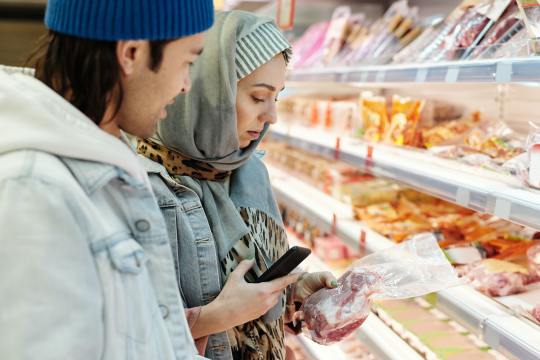
Food innovation refers to introducing novel ideas, products, and technologies that change how society produces, processes, packages, distributes, and consumes food. It goes beyond merely creating new recipes or flavors - food innovation encompasses advances in agriculture, food science, sustainability, and packaging. The goal is to enhance efficiency, safety, nutrition, and the overall consumer experience.
The need for food innovation arises from the ever-changing demands of consumers and the pressing challenges faced by the industry. As the global population continues to grow, so does the demand for food. Additionally, sustainability concerns, climate change, and limited resources prompt exploring alternative food growing and production methods. Innovations in food aim to enhance food security, minimize environmental impact, and offer consumers healthier, more diverse options.
Food innovation occurs through a combination of research, collaboration, and creativity. Scientists, entrepreneurs, farmers, and food industry professionals work together to develop new technologies and processes. Research institutions and startups play a crucial role in conducting experiments, testing new concepts, and bringing innovative products to the market.
In recent years, the food industry has witnessed groundbreaking innovations reshaping how people interact with food. The plant-based movement has gained immense traction, with plant-based alternatives for meat, dairy, and seafood becoming mainstream. Companies have developed plant-based burgers, vegan cheeses, and sustainable seafood alternatives using cutting-edge technologies. Beyond plant-based options, innovations have also focused on alternative protein sources, such as insect-based proteins and lab-grown meats, offering sustainable and protein-rich alternatives.
Swedish startup Mycorena is boosting microbial protein production through its fungi-based mycoprotein called Promyc. This ingredient can be used to create meat and tuna alternatives, beverage additives, and dessert ingredients, offering plant-based and sustainable options for consumers.
Finnish startup Onego Bio has developed a product genetically identical to egg whites using fermentation, and without using actual chickens. It uses precision fermentation of a microflora called Trichoderma reesei to produce ovalbumin, the protein found in chicken egg whites. This technology offers a sustainable and animal-friendly alternative for various food applications, including baked goods, desserts, sauces, and dressings.
Companies like New Culture are incorporating animal-free casein into their cheeses through precision fermentation. This breakthrough allows them to produce animal-free mozzarella cheese, offering a delicious and cruelty-free alternative to traditional dairy products.
In addition, consumers increasingly seek transparency in food choices, leading to the clean label movement. Brands are responding by using simple natural ingredients and avoiding artificial additives and preservatives.
Breakthrough innovations in the food industry are revolutionizing how society grows, produces, and consumes food, focusing on sustainability, nutrition, and convenience. One such innovation is plastic-free and smart packaging. Food companies are exploring biodegradable and even edible packaging solutions in response to environmental concerns. Smart packaging using nanotechnology is also gaining popularity, allowing consumers to assess food safety and quality easily.
The Internet of Things (IoT) in agriculture employs sensors and data analytics for optimizing crop conditions, irrigation, and pest control, reducing resource usage. Food waste reduction solutions, such as surplus food redistribution platforms, are being developed to combat the global food waste crisis. Moreover, biotechnology and data science advances enable personalized nutrition, tailoring dietary recommendations to individuals based on their genetic makeup, lifestyle, and health goals. These innovations promise a more sustainable, healthier, and efficient food future.
Food innovation is driving a remarkable transformation in the food industry, responding to the challenges and opportunities of today. From new plant-based products to sustainable agriculture and cutting-edge technologies, the future of food promises to be more diverse, nutritious, and sustainable. As consumers, entrepreneurs, and stakeholders continue to embrace innovation, the food industry's journey toward a more resilient and conscious future is set to continue.
13 notes
·
View notes
Text
I was looking up insecticides and came across a reddit thread where someone was like "I used neem oil, clove oil, cinnamon, and vinegar but nothing works :("
which drives INSANE. influencer brained essential oil fanatics who do not understand the scope of organic products need to do like an extremely basic google search into this shit because there are plenty of natural/organic insecticides that actually work.
Spinosad
This is a natural compound made from fermented bacteria (saccharopolyspora spinosa) and kills ants, fruit flies, leafminers, mites, mosquitoes, spider mites, and thrips. This comes in a spray and a dust.
Bacillus thuringiensis and its subspecies.
This is a species of bacteria that can control a wide range of pests depending on which subspecies you use.
Bacillus thuringiensis var. israelensis (BTi) is used to kill the larvae of flies, mosquitos, and fungus gnats. This is the bacteria used in Mosquito Bits** granules and can also be purchased as a spray or dust.
Bacillus thuringiensis var. kurstaki (BTk) kills wormy type pests like gypsy moth caterpillars, tomato hornworms, cabbage worms, cabbage loopers, cutworms, and leaf rollers. It will kill non-pest caterpillars though so be careful with this one. This comes in a spray.
Bacillus thuringiensis var. san diego works for certain beetles/weevils but not all. Look up a list to see what it's effective against if you have a beetle problem.
There are other ones but idk if they're really commercially available.
**I see people applying Mosquito Bits ineffectively all the time and then they assume the product doesn't work. Don't just sprinkle the bits onto your soil (they aren't effective unless the bacteria is well washed off and allowed to permeate the surrounding soil, plus they eventually decompose and mold).
Fill a clear pitcher with water and add a tablespoon or two of bits. let them soak for 30 mins, stir, and then use that water for your plants. This ensures an even distribution of the bacteria over the plant's soil. If you retain like 1/8 of the pitcher of water and fill it back up you can get several applications out of your spoon of bits. dump the spent bits and replace with fresh ones once the water in your pitcher gets too clear.
There's other stuff that can work for specific insects in specific environments (inorganic dusts, sticky traps, utilizing beneficial predators like chickens, wild birds, or wasps) but they have enough drawbacks that I wouldn't recommend those things without knowing your exact situation.
Be extremely wary of any DIY/home made "insecticides". At best their effectiveness is deceptive (the "insecticide" does nothing but through its application you are mechanically removing pests by washing or wiping them away), and at worst they may cause harm to your plants.
Lastly, never put any kind oil on your plants. It doesn't matter what people say about neem. Plants breathe through pores in their leaves and oil covers those pores up.
43 notes
·
View notes
Text

10/4/23 ~ One of my classes I’m taking this semester that I haven’t mentioned is Horticulture Pest Control. I know, I know… I want to do sustainable gardening. That’s what I was thinking when I found out I had to take this class for my program.
And what’s funny is, if I pass my license exam, I’ll be a certified pest control person 😆
I’m learning the pros and cons to pest control and it’s actually very interesting. How to culturally do it before it even becomes a problem and then taking chemical actions if it is a problem. But it is very interesting learning both sustainable and non-sustainable sides of pest control. And how we actually add a bunch of our unwanted pest in our yard by doing certain things we think help our yard.
Maybe I’ll get into that sometime, I don’t know 😆 Would any of you be interested in things of that nature? Or nah?!😂
Anywayyyy —
I am being sustainable, and that’s what I’ve always done and always wanted in my garden. So I’m going to stick to my guns & continue to treat my yard/plants with organic, botanical and/or biological practices 👩🏻🌾
I’m learning about biological & botanical pesticides, fungicides & herbicides. So far in the garden - I’ve handpicked all my problems, used neem oil & diatomaceous earth. Since I’m educating myself, I may invest and try out some new biological products for my garden for the next year. 😇 It’s all about learning & testing things out yourself, folks!
#indoor garden#container gardening#sustainable gardening#vegetable gardening#starting seeds#veganuary#grow organic#grow your own food#organic gardening#tomato garden#organic pest control#pest control#organichorticulture#organic herbicide#organic garden#biological#horticulture#horticultural#green gardening#enviromental#environmental garden#green witch#sustainable agriculture
17 notes
·
View notes
Text
Shop Pest Control
Orange Guard is a one-stop shop for all things pest control. For everything we offer, from non-toxic sprayers to human-powered automation, safety, and effort are our top priorities. You can count on us to take care of your environmentally friendly environment.
0 notes
Note
I have a crazy Twilight conspiracy theory.
What if vampires are the Great Filter? Stay with me for this one.
We know that humans have not openly contacted alien life in Twilight and likely have not at all. The most alien thing in Twilight are the vampires themselves. But before getting into that let's assume they are native to Earth.
We also know that Aro is the reason why modern humans are able to exist in Twilight. He orchestrated the facade that keeps vampires from decimating the human population.
Well, if this is so, without Aro there would be no humans. We don't see someone with the same vision as him in Twilight. Someone like him is exceptionally rare. In order for the Volturi to form two things needed to happpen.
1. Aro needed to have the idea. If not Aro then someone needed to have that idea or another one that would do the same thing.
2. Aro or his equivalent needed to succeed.
This was very statistically improbable. Chances are this would never happen, but it did.
Without Aro humanity would not exist as it does today and would likely not exist at all. If vampirism is naturally occurring here, what is to say it did not happen to alien life.
Knowing this, it becomes possible that aliens did not have an Aro or a Volturi. Without a Volturi they would have been overrun by vampires and gone extinct.
Vampires eventually stop working without fuel, fuel being blood, which leaves the haunting possibility of dozens, hundreds, even thousands of worlds inhabited by living statues that have all gone still. It's possible that going long enough without blood would eventually kill them, which might be better or worse. I'm not sure.
That is, however, assuming that vampires are natural. What if they are not?
Suddenly, vampires become a conspiracy, a plot to run humanity into extinction and of course, if it could happen to us it could happen to others.
What if vampires are pest control? A biological deterrent to prevent challangers on the galactic stage.
Or more sinisterly what if they are the end product? Perhaps Earth was seeded with life and vampires in order to produce vampires, and defied the natural order by continuing to survive.
Or perhaps Earth only has life because of vampires. What if the first vampire Was an alien?if this is the case then vampires are descendants of the only naturally occuring life and we formed because of bacteria or similar lifeforms that they brought to us.
The possibility that vampires exist wherever there is life, eventually consuming and destroying it is a shockingly likely one in Twilight. Aro of the Volturi may have saved not only humans, but the only chance for life on the galaxy if not universe with his crazy plan.
A beautiful, beautiful, conspiracy theory for the blog.
Twilight is Mass Effect everyone.
54 notes
·
View notes
Text
🪵Cinnamon 101🪵

Cinnamon(Cinnamomum verum)
Cinnamon is a spice obtained from the inner bark of several tree species from the genus Cinnamomum. Cinnamon is used mainly as an aromatic condiment and flavouring additive in a wide variety of cuisines, sweet and savoury dishes, breakfast cereals, snack foods, bagels, teas, hot chocolate and traditional foods.
Medicinal Uses & Properties
🪵Antioxidant
🪵Anti-inflammatory
🪵May reduce neurological disorders, such as Alzheimer's disease
🪵Anticancer
🪵Improves blood circulation
🪵Boosts brain function
🪵May have antibacterial and antifungal properties
🪵Control blood sugar
Magickal Properties
🪵Love
🪵Fire Magick and Warmth
🪵Lust
🪵Purification
🪵Money
🪵Protection
🪵Passion
🪵Sex
Uses for Cinnamon
🪵Make a potpourri or simmer pot
🪵Burn cinnamon incense
🪵Brew cinnamon tea, or make other foods
🪵Use cinnamon(or cinnamon products, such as oils) to keep away bugs.
🪵Make a candle and add cinnamon to the wax
🪵Sprinkle cinnamon around, or make a natural bug repellent, to keep away pests, such as ants.
Safety
🪵Please do not burn cinnamon. Inhaling cinnamon, especially for long periods, can lead to respiratory inflammation and irritation, as well as coughing, wheezing, and breathing difficulty. Please buy cinnamon incense instead of burning cinnamon directly, the cinnamon in the incense has been prepared in a way that is safer to burn.[1]
🪵Please use a carrier oil when applying essential oils to your skin or scalp. I recommend doing a skin patch test before applying in large quantities. NEVER put essential oils on pets, even when they're mixed with a carrier oil. It can and most likely will irritate their skin or otherwise negatively impact them.
🪵Please keep cinnamon and cinnamon products out of birds access. Allegedly, Chinese/Cassia cinnamon is toxic to birds but not "regular" cinnamon. I say just keep all cinnamon away from them.[2]
🪵Cinnamon, while not fatal, can become toxic for dogs when consumed in large amounts. It causes skin and digestive irritation when consumed and inhalation can cause coughing, choking, and difficulty breathing.[3] These same warnings also apply to cats.[4]
#digital grimoire#grimoire#witchblr#witchcraft#pagan#paganblr#paganism#pagans of tumblr#wicca#herbalism 101#herbal#natural remedies#home remedies#ground cinnamon#cinnamon#forage#foraging#green witch#cottage witch#witches of tumblr
3 notes
·
View notes
Text
Thoughts on The One-Straw Revolution
I've been reading a digital copy of Masanobu Fukuoka's book, The One-Straw Revolution, available for free here: https://library.uniteddiversity.coop/Food/The-One-Straw-Revolution.pdf
To briefly summarize, Fukuoka's philosophy of "do-nothing" farming meant paying close attention to and working with the natural environment in order to reduce unnecessary work, increase yields, and increase soil fertility when compared to chemical and conventional farming techniques. He greatly impacted the organic farming movement and techniques, such as no-till gardening, cover crops as living mulch, and crop rotation. His philosophy also reminds me of the modern definitions of slow living, permaculture, and degrowth.
More details and personal thoughts/reflections under the cut.
To preface my thoughts, the way Fukuoka writes - humble, straightforward, a little eccentric to most people - sounds just like my dad. That's a big reason why I read it so quickly, haha.
Note, this is largely a philosophy book with a lot of influence from Buddhism and Taoism, though not strictly subscribing to any particular faith. Fukuoka believed that a simple life aligned with nature nourishes the land, body, and spirit, while seeking to control nature for profit, desire, or an abstract concept of "progress" leads to environmental destruction and negative outcomes for humans. My summary doesn't really do it justice, so I recommend reading through the book or intro.
While Fukuoka describes what exact techniques work for his fields, they are not meant to be copied in every garden; farmers must understand the conditions they are growing in and adjust accordingly.
Fukuoka's method includes strategically minimizing human intervention, growing according to what would naturally flourish on the land/season. Strong, well-adapted plants on well-nourished soil will naturally resist pests, disease, and drought. For example, he allows vegetables to grow semi-wild in his orchard without pruning, staking, transplanting, etc.
Recently, I have been anxiously fussing in the garden, checking for water, disease, pests, fruit, etc. as one usually expects a gardener to do, but I do wonder what's the minimum amount of work needed to maintain my plants. It took Fukuoka decades of trial and error to fine-tune his methods in his particular environment, and growers must do the same in their own environment as well.
I currently struggle with seed starting and container gardening. It's certainly appealing to throw some seeds down and let nature decide which ones will live.
I'm still learning the climate in my veggie garden, and my parent's house is more inland with hotter, drier summers and hard clay dirt. How would I set up a productive yard that improves soil health/fertility over time with minimal work? California can and does grow a fuckton of produce, but what types of plants would naturally flourish in my yards, especially when comparing native plants with conventional vegetable crops?
What would a local, "natural" diet look like in Southern California? What food cultures would I draw from - Native American, Mexican, my mom's native Indonesia? What would be nourishing for my body, and how much of that food can I actually grow here?
What cover crops would be best to restore our soil? Perhaps a native like tomcat or pinpoint clover, or a more readily available white or red clover? Is it important to use native plants compared to similar plants from other parts of the world (ex. the Mediterranean), even if they fill a similar ecologic niche? How "green" is a yard in a desert supposed to be anyway?
All of these questions will influence my decisions as a gardener. I've hardly even discussed the spiritual/philosophical aspects of the book either. My Asian philosophy professor would be disappointed that I cannot explain it well, but reading the book is a "finger pointing at the moon" situation; enlightenment cannot be "known" logically, it is only experienced by giving up ego/control/desire. For Fukuoka, that meant living as a part of, not separate from, nature/reality.
Or something like that. Fukuoka is a much better teacher than I am.
Overall, the book was a thoughtful read as someone interested in the healing and restorative work of gardening. This was my favorite quote from Fukuoka:
"Extravagance of desire is the fundamental cause which has led the world into its present predicament. Fast rather than slow, more rather than less - this flashy "development" is linked directly to society's impending collapse. It has only served to separate man from nature. Humanity must stop indulging the desire for material possessions and personal gain and move instead toward spiritual awareness."
I have added two more of Fukuoka's books to my reading list: The Natural Way of Farming, and Sowing Seeds in the Desert.
9 notes
·
View notes
Text
Growing Questions, Growing Food
As a child I always loved the outdoors. Not in a particularly adventurous way (I was afraid to climb high into trees or run barefoot in the woods), but in a more quiet cautious way. I loved to lay in the grass in the schoolyard and look at insects or crouch down in the parking lot to observe the plants coming up through cracks in the asphalt. I would watch them and imagine stories for each of these living things. How did they get there? What was their life like? Did they have families? Friends? To my delight, I discovered that some of these questions had real, not just imagined, answers as my science teachers explained how seeds moved from place to place and how bees lived and worked together. As I learned more about nature, my questions only grew and I developed a deep sense of wonder and appreciation for the natural world.
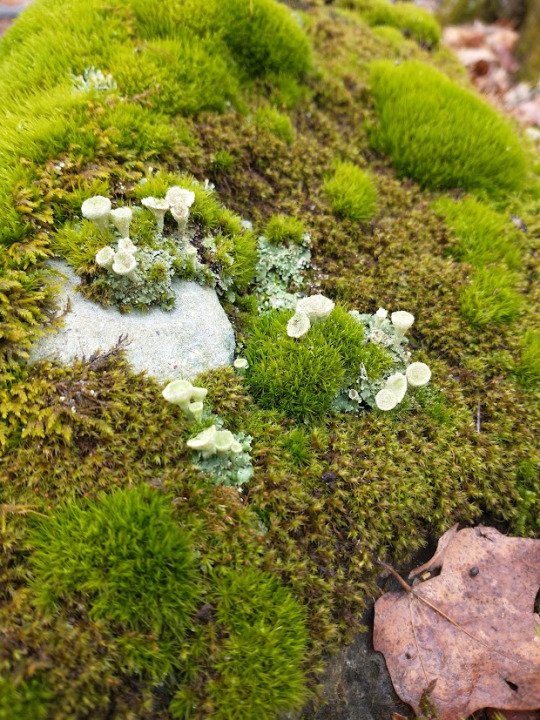
Today I’m a fourth-year student in environmental science and my sense of wonder and delight for the natural world is still alive and well. The information I learn in class continues to fascinate me. I am able to appreciate nature not only for its aesthetics, but for the ecosystem services and wealth of knowledge it provides. Through my education at the University of Guelph I discovered in myself a true passion for agriculture in addition to my love for nature. This has led to my pursuit of a career in the agricultural industry. But what does food production have to do with nature interpretation? I would argue that agriculture is one of the most common ways that people around the world experience nature. Every crop we grow has been selected from a natural ancestor and every farmer must depend on the climate and soil in order to grow food. Growing food is when I feel most connected to the land and has allowed me to feel a deep sense of place in Southwestern Ontario.

Throughout my life growing food has allowed me to develop a sense of place and feel at home wherever I am. There’s something about digging in the soil and deciding what you can grow in a very specific location that allows you to feel connected to the environment and a sense of “more”. Often throughout this process you’ll need advice from people who will explain to you the history of the land or provide insights unique to the particular area you are working in. This feeling of “more” is described in our textbook as knowing specific characteristics and how a particular place fits into a bigger picture (Beck et al., 2018). Growing food forces you to work with nature as sometimes challenges can only be solved with an understanding of natural processes or relationships. For example, a pest feeding on your broccoli may be controlled by creating habitat nearby for a natural predator.

I owe it to my mother most of all for creating a sense of place for me in my own backyard. As a child I was often enlisted to help out in the garden and what I first thought of as a chore quickly changed when my mother gave me a strip of dirt at the side of our house where I could grow anything I wanted. I set to work digging out every rock from that strip and planting a row of strawberries that I would look at and care for every day. I learned as much as I could about gardening and tried out different plants on that strip for several years. From that small strip my interest grew and I have since worked and volunteered on several research farms and community gardens. These experiences have allowed me to see nature not only as untouched forests and ponds but also as the roots and reality of agriculture.
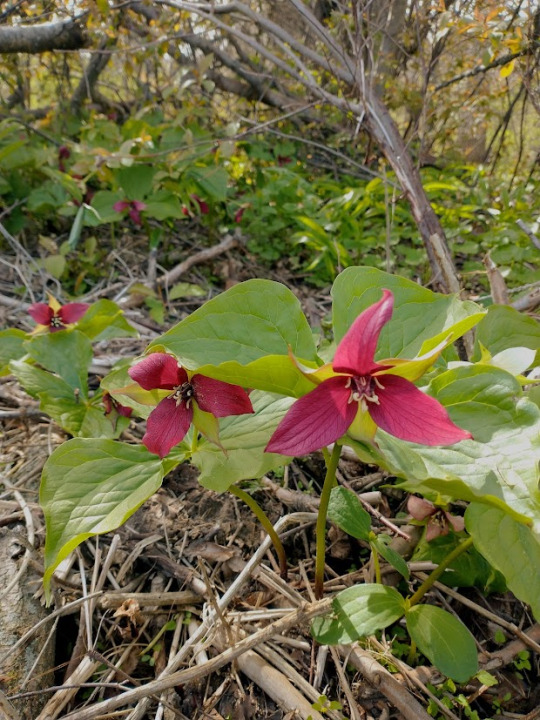
2 notes
·
View notes
Text
Unlocking the Healing Power in Your Backyard: The Medicinal Garden Kit by Nicole Apelian, Ph.D

In a world dominated by fast-paced lifestyles and reliance on conventional medicine, the ancient wisdom of utilizing nature's remedies is often overlooked. Nicole Apelian, Ph.D., a mother, herbalist, survival skills instructor, and biologist, brings a powerful solution to the forefront with her Medicinal Garden Kit. This kit, born from Nicole's personal journey battling Multiple Sclerosis (MS), is a testament to the transformative potential of medicinal plants found right in your backyard.
The Backstory: From Wheelchair to Wilderness Survival
Nicole's incredible journey began when diagnosed with MS at the age of 29. Faced with limited relief from conventional treatments, she turned to the natural remedies cultivated in her backyard. Not only did she manage her MS symptoms, but she also thrived, showcasing her resilience on the History Channel's "Alone" survival show. Inspired by her experience, Nicole created the Medicinal Garden Kit to empower others to take control of their health naturally.

A Backyard Pharmacy: The Medicinal Garden Kit Unveiled
The Medicinal Garden Kit is a comprehensive solution, offering seeds for ten premium-quality herbs carefully selected by Nicole. The kit includes a bonus Herbal Medicinal Guide: From Seeds to Remedies, ensuring even beginners can transform these plants into various medicinal forms.
10 Medicinal Plants Unveiled: CTA and Product Information
1. Chicory – The Painkilling Plant:
- Quick Backyard Remedy: Add ground chicory root to coffee or tea for pain relief and digestive benefits.
- Garden Uses: Excellent soil builder.
- Explore the Chicory Salve, Coffee, and other remedies in the brochure.
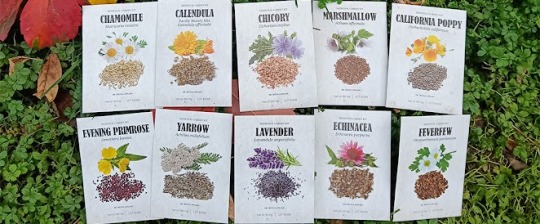
2. Yarrow – The Backyard Wound Healer:
- Quick Backyard Remedy: Chew fresh yarrow leaf for toothache relief.
- Garden Uses: Attracts beneficial insects.
- Discover the Yarrow Tincture, Poultice, and more in the brochure.
3. California Poppy – Better Than Sleeping Pills:
- Quick Backyard Remedy: Make Sleep Tea for restorative sleep.
- Garden Uses: High pollen production attracts beneficial insects.
- Explore Deep Sleep Tincture, Analgesic Salve, and more in the brochure.

4. Marshmallow – The Digestive Powerhouse:
- Quick Backyard Remedy: Make a cold root infusion for a soothing effect on the digestive tract.
- Garden Uses: Attracts painted lady butterflies and native pollinators.
- Discover Cold Root Infusion, Stomach Tea, and other remedies in the brochure.
5. Chamomile – The Natural Antibiotic:
- Quick Backyard Remedy: Add leaves to a warm bath for relaxation.
- Garden Uses: Known as "The Gardener’s Doctor."
- Explore Chamomile Compresses, Infused Chamomile Oil, and more in the brochure.
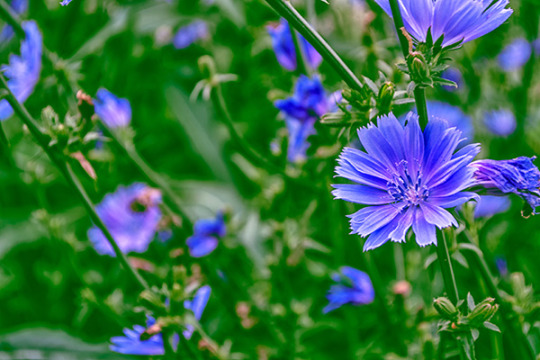
6. Evening Primrose – Skin and Nerves Remedy:
- Quick Backyard Remedy: Crush leaves or roots for a healing poultice.
- Garden Uses: Attracts hawk moths, butterflies, and bumblebees.
Discover Infused Evening Primrose Oil, Evening Primrose Tea, and more in the brochure.
7. Lavender – The Perennial Anti-Inflammatory Herb:
- Quick Backyard Remedy: Use fresh lavender in a pouch for a calming pillow.
- Garden Uses: Repels bugs and pests.
- Explore Lavender Sleep Tincture, Lavender Oil, and more in the brochure.

8. Echinacea – The Immunity Plant:
- Quick Backyard Remedy: Make a hot decoction for immune support.
- Garden Uses: Helps keep plants moist and prevents weed growth.
- Discover Immune-Stimulating Echinacea Tincture, Antiseptic Mouthwash, and more in the brochure.
9. Calendula – The Herb for Dark Times:
- Quick Backyard Remedy: Make a salve for wounds, burns, and insect bites.
- Garden Uses: Moves lymphatic fluid and cleanses the lymphatic system.
- Explore Calendula Salve, Calendula Tea, and more in the brochure.
Conclusion: Transform Your Backyard into a Healing Oasis
Nicole Apelian's Medicinal Garden Kit offers more than just seeds; it provides the tools to reconnect with nature's healing power. Transform your backyard into a sanctuary of well-being, ensuring you have access to natural remedies in times of need. Embrace the ancient wisdom of herbal medicine and take charge of your health with the Medicinal Garden Kit today.
Purchase the Medicinal Garden Kit now and embark on your journey to natural healing. Your backyard pharmacy awaits!


2 notes
·
View notes